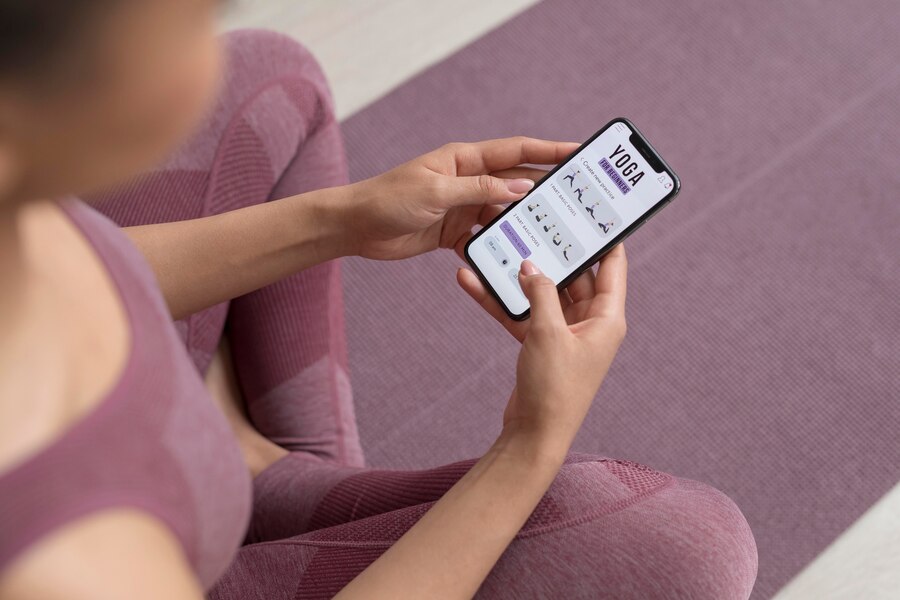In today’s fast-paced digital era, health and fitness apps are on the rise, and yoga is no exception. Among the top yoga apps, Down Dog stands out for its personalized workouts and smooth user experience. The app’s ability to deliver customized yoga sessions has led to its growing popularity. If you’re considering building a Down Dog clone or a yoga app similar to it, you’re in the right place! This comprehensive guide will walk you through the key steps, features, and benefits of building a yoga app like Down Dog.
Why Build a Yoga App Like Down Dog?
Before diving into the development process, let’s first understand why building a Down Dog clone is a fantastic idea. The health and fitness market has grown significantly, and yoga apps are in high demand as more people prioritize their physical and mental well-being. Yoga apps offer the flexibility to practice yoga anytime and anywhere, making them extremely popular.
The Growing Popularity of Yoga Apps
The demand for fitness apps is booming, and yoga has found a special place within this niche. In fact, the global yoga market is expected to grow by USD 27.33 billion between 2020 and 2024, with a growing focus on health and mindfulness. Yoga apps provide users with access to virtual classes, tutorials, and guides, allowing them to practice yoga at their convenience.
Why Choose a Down Dog Clone?
Down Dog has gained popularity due to its intuitive interface, flexible options, and personalized yoga sessions. By creating a Down Dog clone, you can tap into the ever-growing yoga and fitness market while offering a customizable experience to your users.
Features of a Successful Yoga App
Building a yoga app like Down Dog requires you to integrate essential features that cater to the needs of users while ensuring that the app stands out from the competition. Here are the key features that your Down Dog clone should have:
1. Personalized Workouts
One of the standout features of Down Dog is its ability to customize yoga sessions according to the user’s preferences, experience level, and time availability. A Down Dog clone should include personalized workout plans that adjust to each user’s fitness goals.
2. Multiple Yoga Styles
Offering various yoga styles like Vinyasa, Hatha, Ashtanga, and Yin will appeal to a broader audience. Users will appreciate the flexibility to choose from different styles based on their mood and energy levels.
3. High-Quality Video Tutorials
Yoga requires precision and correct postures. High-quality video tutorials in your app will ensure users can follow along and practice safely. Providing different instructors, languages, and video resolutions can enhance the user experience.
4. User-Friendly Interface
A simple and intuitive interface is crucial to keep users engaged. Easy navigation, clean design, and minimal distractions will enhance the overall experience, making the app user-friendly.
5. Music and Soundtracks
Incorporating relaxing background music or allowing users to choose their own playlists during yoga sessions will make the experience more enjoyable and immersive.
6. Offline Access
Many users practice yoga in places where internet access might not be available. Providing an offline mode will allow users to download their favorite sessions and use the app without an active internet connection.
7. Progress Tracking
Help users track their progress over time by integrating analytics that show how many sessions they’ve completed, how long they’ve practiced, and improvements in their flexibility or strength.
8. Social Sharing and Community Building
Encourage a sense of community by enabling users to share their progress on social media platforms or within a built-in app community. This feature can help build a loyal user base and attract new users.
9. Push Notifications and Reminders
Send gentle push notifications or reminders to users to keep them motivated and on track with their yoga practice. This can help improve user retention and encourage consistency.
10. Integration with Wearables and Health Apps
Many people use fitness trackers or health apps to monitor their physical activity. Ensure your Down Dog clone is compatible with popular wearables like Apple Watch, Fitbit, or Google Fit to give users a holistic view of their health.
Steps to Build a Yoga App Like Down Dog
Now that we’ve covered the essential features, let’s move on to the development process of a Down Dog clone.
1. Research and Market Analysis
Before building your app, conduct thorough market research to understand your target audience. Identify their preferences, pain points, and what features they’re looking for in a yoga app. Additionally, analyze your competitors, including Down Dog, to identify gaps you can fill in the market.
2. Choose the Right Development Team
Building a high-quality app requires an experienced development team. Whether you choose to go with an in-house team or a third-party development company, ensure they have experience in fitness app development and are familiar with the latest technologies like AI and machine learning for personalizing workouts.
3. Design the User Interface (UI)
The design of your app plays a crucial role in user satisfaction. Create an intuitive and aesthetically pleasing UI/UX design that ensures smooth navigation. Tools like Figma or Adobe XD can be used to prototype the design before development.
4. Develop the Backend
The backend of your app should be scalable and robust enough to handle multiple users simultaneously. Use modern technologies like Node.js, Python, or Ruby on Rails for backend development. Implementing cloud solutions such as AWS or Google Cloud can help you store user data and scale effortlessly.
5. Integrate Key Features
Ensure that all the essential features like personalized workouts, video tutorials, music, progress tracking, and more are integrated into the app. Use technologies like AI and machine learning to recommend personalized yoga sessions based on user preferences.
6. Testing and Quality Assurance
Before launching the app, rigorous testing is crucial to identify bugs and improve performance. Ensure that the app works seamlessly on both Android and iOS devices. Regular testing helps eliminate issues related to user experience, performance, and security.
7. Launch and Marketing
Once your app is fully developed and tested, it’s time to launch it on app stores. Invest in a solid marketing strategy that includes SEO, social media advertising, influencer marketing, and email campaigns to promote your app. Encourage early users to leave reviews and ratings to help build credibility.
Monetization Strategies for Your Yoga App
Building an app is one thing, but monetizing it is just as important. Here are a few ways you can generate revenue from your Down Dog clone:
1. Subscription Model
Offer a freemium model where users can access basic features for free and pay for advanced features through a monthly or yearly subscription. This model is popular with fitness and yoga apps.
2. In-App Purchases
Allow users to purchase specific features or classes within the app. For example, you could offer exclusive yoga sessions with professional instructors or specialized courses for different levels.
3. Advertisements
Monetize the free version of the app by displaying non-intrusive ads. However, ensure that ads do not disrupt the user experience. You can offer an ad-free experience with premium subscriptions.
4. Partnerships with Brands
Collaborate with fitness brands and yoga instructors to promote products or services within the app. This can be a win-win situation as it adds value to your users while generating revenue for your app.
Challenges in Building a Yoga App
While building a yoga app like Down Dog presents numerous opportunities, there are also some challenges:
- User Retention: Keeping users engaged over time can be difficult. Features like progress tracking and reminders can help with retention.
- Competition: The fitness app market is competitive, so it’s crucial to offer unique features and build a strong brand.
- Technological Integration: Developing personalized workout plans using AI can be complex, and ensuring smooth integration with wearables requires a robust technical foundation.
Conclusion
Building a Down Dog clone or a similar yoga app can be a profitable venture, especially with the increasing demand for fitness and wellness solutions. By focusing on personalization, high-quality video content, and seamless user experience, you can create a yoga app that resonates with users. With the right approach to development, features, and monetization, your app has the potential to become a favorite among yoga enthusiasts.
Remember, the key to success is delivering a platform that offers real value to users and consistently evolves based on their needs. Happy developing!
Also Read: How to Create a Buy Now Pay Later App Like Afterpay



